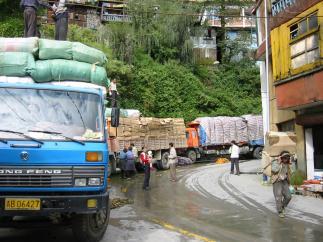Knowledge fuels change
For over a decade, Energypedia has shared free, reliable energy expertise with the world.
We’re now facing a serious funding gap.
Help keep this platform alive — your donation, big or small, truly matters!
Thank you for your support
Rural-Urban-Linkages
Overview
Since 2009, for the first time in history there have been more people living in urban areas than in rural ones. The United Nations calculates that by 2050 about 70 per cent of the world’s population will be living in cities. Urbanisation is increasing particularly quickly in newly industrialising and developing countries, with far-reaching consequences for the reciprocal relationships between rural and urban areas.
The following articles explains........
The Pulling Power of the Cities
There is a steady growth in the exchange of information, capital, values, work, education and medical care between rural and urban areas. Many people spend several hours a day travelling to and from their place of work or education in the city. Some regularly spend several weeks or months in what are often better-paid jobs in the city. This need for mobility, which is often the result of economic forces, increases the demand for transport links between city and countryside.
Investment in Rural Areas by Migrants
People who leave rural areas in order to earn money in the cities often invest at least some of their earnings in their home region – either by sending remittances or by transferring means of production (machinery and equipment) or consumer goods (such as electrical goods and household appliances). These investments are often the only way in which the rural area profits from innovation.
|
Secondary centres often function as transhipment points for products from rural regions.[1] |
Endangering the Food Supply
Importing Food pushes up Food Prices
Strengthening Regional Structures by Improving Urban-Rural Linkages
Further Information
References
- ↑ Photo: Gerhard Metschies, Tibet, China, 2002.




















